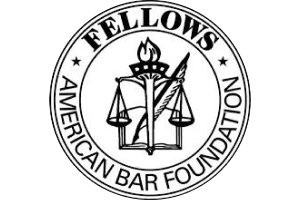Creating a Foundation for Your Future
Las Vegas Green Card Lawyers
How to Become a Lawful Permanent Resident
Call Us Today 702-707-2000
Are you or your loved one looking to becoming a lawful permanent resident (“green card” holder) of the United States? If so, the opportunity to seek residency in the U.S. can be achieved lawfully through a qualifying family relationship. The Immigration and Nationality Act grants you the ability to seek a green card in the U.S. through a process called “adjustment of status.”
However, not everyone is eligible to apply for a green card through an adjustment of status. For this reason, it’s important for you to understand the process and ascertain whether you’re an eligible candidate to seek lawful permanent residency.
What is a Lawful Permanent Resident?
A Lawful Permanent Resident (“LPR”), otherwise known as a green card holder, is a foreign national who is legally authorized to live and work permanently in the United States. A person cannot become a citizen until they first become a lawful permanent resident. After a certain number of years of LPR status, and while maintaining a good background the whole time, a person can eventually apply to become a United States citizen through the Application for Naturalization, Form N-400.
When you apply for a green card and are accepted, you receive a physical identification card proving your legal status as a person authorized to live and work in the U.S. The card is similar to a driver’s license, with predominantly green colors, and proves that you’re a lawful permanent resident of the United States. Green cards were first issued by the United States government following the end of World War II and, because they were predominately green in color, they came to be referred to as “green cards.” Basically, it’s an identity card that signifies a person is authorized to lawfully live and work in the United States.
There are two main ways to apply for permanent residence in the U.S.— adjustment of status and consular processing.
Eligibility
To become eligible to apply for green card status, you must fall under a certain category.
The categories include:
- An immediate relative or someone that falls within a family-based preference category (family reunification)
- Someone being sponsored by an employer or who is an investor or physician
- A special immigrant such as a religious worker or an international broadcaster
- A Refugee or someone granted Asylum status
- Someone with human trafficking/crime victim status
- A qualifying victim of abuse
- Someone that falls within “other” status such as an American Indian born in Canada or Diversity Immigrant Visa Program
- Someone eligible through registry where he or she has resided continuously in the U.S. since before January 1, 1972
Advantages of Holding a Green Card
Some of the advantages of holding a green card include:
- Being able to accept an offer of employment without certain restrictions
- Being able to own property
- Being able to receive financial aid at public educational institutions
- Being able to join and serve in the Armed Forces
- Being able to become a United States citizen
- Being able to sponsor a foreign spouse or unmarried children into the United States
What is Adjustment of Status?
If you’re eligible to apply for lawful permanent residency in the U.S., you may be eligible to apply through an adjustment of status procedure. It’s important to understand, applying for a green card and applying for a green card through the adjustment of status procedure require two different eligibilities.
Adjustment of status is the process used to apply for lawful permanent residency while maintaining your physical presence in the United States. If you already have an approved immigrant visa, you can file the Application to Register Permanent Residence or Adjust Status, Form I-485, with the U.S. Citizenship and Immigration Services (USCIS). By using adjustment of status, you don’t have to leave the United States.
This procedure involves several forms, supporting documents, fees, and an official interview at a USCIS office. Hiring an experienced immigration attorney will allow you to go through a smooth process and maintain your peace of mind.
If you’re seeking to apply for Lawful Permanent Residence in the United States, you need to know if the adjustment of status process is right for you. If not, there are other options you can take, such as applying via consular processing.
Are You Eligible to Apply for a Green Card if You’re Engaged?
If you’re the fiancé(e) of a U.S. citizen, then you’re eligible to apply for lawful permanent residence through the adjustment of status process after you’re legally married in the country.
To do so, you must first apply for the K-1 fiancé(e) nonimmigrant visa, otherwise known as the Petition for Alien Fiancé(e), Form I-129F. If accepted, upon entering the United States, you and your fiancé(e) must legally be able to marry and must do so within the required 90-day window.
Upon legally marrying, you’ll be classified as an “immediate relative” and thus be able to apply for lawful permanent residence through the adjustment of status process.
Are You Eligible to Apply for a Green Card if You’re Married?
If you’re the spouse of a U.S. citizen, you’re considered an “immediate relative” and are eligible to apply for lawful permanent residence via adjustment of status if you meet additional requirements.
If you’re currently residing lawfully in the U.S. and haven’t violated any terms of immigration law, you may be able to file a Form I-485 without having to leave the country. In addition, if you lawfully entered the country, but overstayed the time issued for your visa without the intent to do so unlawfully, you’re still able to adjust your status through marriage to a U.S. citizen.
If you’re not currently residing in the country, your spouse must sponsor you through a Petition for Alien Relative, Form I-130, in order to allow you to receive an immigrant visa into the U.S. However, because you’re classified as an “immediate relative,” you qualify to concurrently file your Form I-130 (while pending or approved) with a Form I-485. So essentially, you’re granted the ability to apply for your immigrant visa and green card through the adjustment of status process at the same time.
Steps to Pursue a Green Card Via Adjustment of Status
The adjustment of status process requires you to fill out and submit various forms, pay an application filing fee, submit supporting documents, attend a biometric services appointment, and appear for an interview. The following are the steps you will need to follow for applying for a green card through the adjustment of status process.
1. Determine Eligibility Status
Before applying to adjust status to obtain lawful permanent residency (green card), you must determine if you meet the requirements to do so. The requirements to become eligible to apply for a green card through an adjustment of status include:
- Must already have an approved immigration visa through family or employment
- Asylum/Refugee status
- Must be in the United States
- Valid visa status (no expired visa or illegal entry visa violation)
An exception to overextending your expired visa and still maintaining eligibility is if you are an immediate relative (child, parent, spouse) of a U.S. citizen.
Keep in mind that even if you may not be eligible to apply for a green card through the adjustment of status procedure, you may still be able to apply through consular processing.
2. Obtain an Approved Immigrant Petition
You must provide proof of an approved immigration petition, whether it’s been filed by your immediate relative or employer or through your special immigration status. However, depending on your status, you can concurrently apply for the adjustment of status with your immigration petition.
3. Check Visa Availability
To file your application for adjustment of status, you have to determine whether or not there is visa availability for the year in your category.
There are only a certain amount of visas available for each “fiscal” year. That means, depending upon the type of immigrant visa and category of eligibility you fall under, the visa you are applying for may not be available for you that year and you may have to wait for the next cycle to apply and get accepted.
4. File Form I-485
Once you’ve determined you’re eligible and there is visa availability, you can file Form I-485 with USCIS. In addition to this form, you must complete and submit the necessary supplemental form for adjustment of status process and the filing fee.
The supplemental form needed is called Form I-485 Supplement A to Form I-485, Adjustment of Status Under Section 245(i), of the Immigration and Nationality Act (INA).
For the filing fee, it depends on your age and status. Fees, which are subject to change at any time, range from:
- Under 14: $750, no fee for biometric services
- Under 14 but not filing with a parent: $1,140, no fee for biometric services
- Age 14 – 78: $1,140 plus $85 for the biometric services
- Age 79 and up: $1,140, no fee for biometric services
- Refugee status: $0 cost total
5. Attend the Biometrics Services Appointment
After filing your Form I-485, you’ll be notified of the date and time to attend your biometrics services appointment.
This appointment is needed to take your fingerprints, provide a photograph for identification, and your signature to conduct a background check and verify your identity. You must attend the appointment or contact someone in advance to get your appointment scheduled for another time.
6. Interview (if Accepted)
Once USCIS receives your case, biometrics information, and conducts a successful background check, the agency will decide whether or not to grant you an interview.
If you’re granted an interview, you must attend and answer all questions about your Form I-485. In addition to being prepared for the questions, you must bring with you the original copies of documentation such as travel documents, passports, and other identifications or necessary forms.
7. Submit Additional Documents
You may need to submit additional documents to determine eligibility depending on your case. If you do not send the required supplemental documents by the specified date and time, your application may be denied.
8. Check Case Status
After your interview, you may check your case status to view whether or not a formal decision has been made. The status can be viewed online or by phone at (800) 373-5283.
9. Official Decision
When the official decision for your case has been made, you’ll be sent a written decision.
If approved, you’ll receive approval before receiving the physical Permanent Resident card (green card).
If denied, you’ll receive an explanation as to why your application was denied, whether you may appeal the decision, and instructions on how to pursue the appeal (if applicable).
What is Consular Processing?
Consular processing is required for those who are not physically and lawfully residing in the U.S. but seek to become a Lawful Permanent Resident. In that case, you must return to your home country if you are in the U.S. to be eligible to apply. If you were residing in the country unlawfully, you may not be able to return to the U.S. or apply for immigration visa/permanent residence for at least 3 years.
Through the process, you must go to the U.S. embassy or consulate located in your home country to file a petition for lawful permanent residency in the U.S. once you have been approved for an immigration visa.
If accepted, you must pay a USCIS immigrant fee before departing to the U.S. and going through Customs and Border Protection at the port of entry for lawful admittance into the country. If you don’t pay the fee, you may be denied entry in the U.S. The current USCIS immigrant fee is $220, but like most immigration fees can change.
Adjustment of Status vs. Consular Processing
As previously stated, the two main ways to apply for a green card is through adjustment of status and consular processing.
Generally, consular processing has a shorter waiting period (6-12 months) and a higher rate of acceptance than adjustment of status. However, the process of adjusting your status is more convenient because you don’t have to return to your home country to go through the application process through an embassy or consulate if you’re already maintaining a legal physical presence in the U.S.
The Unlawful Presence Waiver
If you’ve overstayed your visa, you may be subject to a 3 or 10 year bar depending upon the amount of your overstay. What this means in practical terms is that you’ll be prevented from coming back to the United States for either 3 or 10 years depending upon how long you overstayed your visa. You can, however, request a waiver of the “unlawful presence” bar if you meet the requirements.
In other words, you can essentially apply for the inadmissibility of your unlawful residency in the United States if, for example, you’re a relative of a United States citizen or a permanent resident. You must file the Application for Provisional Unlawful Presence Waiver, Form I-601A, before leaving the U.S. to get it processed and potentially accepted to grant you access for an immigrant visa interview at the U.S. embassy/consulate in your home country.
If approved, you may still be eligible to apply for a green card in the U.S. through consular processing, not adjustment of status, after submitting all your necessary immigrant petitions and attending your interview at the U.S. embassy or consulate in your home country.







